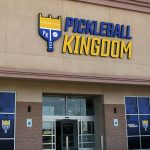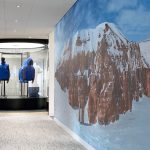Gildan Activewear reported earnings in the fourth quarter slumped 24.0 percent after absorbing $11.0 million of restructuring and acquisition-related costs primarily to cover the implementation of an organizational realignment and related executive management changes. Revenues in the quarter grew 11.2 percent.
In addition, the company announced a 20 percent increase in the amount of its quarterly dividend and the renewal of its normal course issuer bid to repurchase up to 5 percent of its issued and outstanding common shares.
Gildan finished the year with strong sales growth of 11.2 percent in the fourth quarter, driven primarily by a strong finish in Printwear, where sales grew 27.6 percent in the quarter or 22.5 percent on an organic basis, excluding the impact of the American Apparel acquisition early in 2017. Adjusted diluted EPS of $0.31 was in line with the top end of our guidance range and down slightly from $0.32 in the fourth quarter of 2016, reflecting anticipated headwinds from the non-recurrence of the income tax recovery in the fourth quarter of 2016, higher cotton and other input costs and lower sales in Branded Apparel. For the year ended December 31, 2017, sales totaled $2.75 billion, up 6.4 percent compared to last year and within Gildan’s previous sales guidance. We generated adjusted operating margins of 15.4 percent for the full year, up 60 basis points over last year, diluted EPS of $1.61 and adjusted diluted EPS of $1.72, up 14 percent over the prior year. Adjusted EBITDA of $586.1 million for the year was in line with the company’s guidance range of $580-$590 million. They continued to generate strong free cash flow through the fourth quarter and delivered another record year of free cash flow totaling $519 million for the full year, up more than $120 million from the prior year. During 2017, the company continued to execute on its priorities for capital allocation and returned $413 million to shareholders through dividends and share repurchases.
Effective January 1, 2018, the company consolidated its organizational structure and implemented executive leadership changes to better leverage its go-to-market strategy across its brand portfolio and to drive greater operational efficiency across the organization. The company combined its Printwear and Branded Apparel businesses into one consolidated divisional operating structure centralizing marketing, merchandising, sales, distribution and administrative functions to better position the company to capitalize on growth opportunities within the evolving industry landscape. The combined organization will be led by Michael R. Hoffman, president,Sales, Marketing and Distribution, who was previously serving as president, Printwear. Eric Lehman, previously president, Branded Apparel, announced he will leave the organization to pursue other opportunities effective June 30, 2018, following the integration of the two segments. The combination of the two operating businesses is intended to drive a leaner and more streamlined organization, which is expected to provide operational efficiencies as the company leverages a common infrastructure to maximize the growth potential of its brands. Anticipated cost savings in 2018 will be initially reinvested in distribution and e-commerce activities. The company is currently reviewing its operating segment reporting in order to reflect the new organizational structure under which the business will be managed and expects to report under one reportable business segment going forward.
Consolidated Results
Consolidated net sales of $653.7 million for the fourth quarter of 2017 increased 11.2 percent compared to the corresponding quarter in 2016 and reflected a sales increase of 27.6 percent in the Printwear segment, including the impact of the acquisition of American Apparel, partly offset by a decline of 9.2 percent in Branded Apparel.
Consolidated gross margin in the fourth quarter increased 40 basis points to 27.1 percent compared to the prior year quarter. The increase was mainly due to higher net selling prices and favourable product mix in Printwear, partly offset by unfavorable product mix in Branded Apparel, higher raw material costs and the impact of additional manufacturing expenses of approximately $6 million, or 95 basis points of gross margin, resulting from temporary production interruptions related to the recent election in Honduras. Consolidated SG&A expenses as a percentage of sales were 15.9 percent, up from 14.8 percent in the fourth quarter last year, primarily due to the impact of the American Apparel acquisition, lower fixed cost absorption in Branded Apparel and higher distribution and e-commerce expenses. Consolidated operating margin and adjusted operating margin in the fourth quarter of 2017 were 9.5 percent and 11.2 percent, respectively, down from consolidated operating margin and adjusted operating margin of 11.9 percent in the fourth quarter of 2016 as the benefit of higher gross margin was offset by higher SG&A as a percentage of sales.
The company incurred $11.0 million of restructuring and acquisition-related costs in the fourth quarter of 2017 primarily associated with the company’s organizational consolidation, as well as integration costs related to current and prior year acquisitions. As part of the organizational realignment, we incurred costs in connection with the combination of our Printwear and Branded Apparel divisions, consolidating marketing, merchandising, sales and administrative functions, and further refining our direct-to-consumer approach, including the rationalization of our retail store outlets.
Net earnings totaled $54.9 million or $0.25 per share on a diluted basis for the three months ended December 31, 2017, compared with net earnings of $74.3 million or $0.32 per share for the three months ended January 1, 2017. Excluding after-tax restructuring and acquisition-related costs of $12.7 million in the fourth quarter and $0.2 million in the same quarter last year, Gildan reported adjusted net earnings of $67.6 million, or $0.31 per share on a diluted basis for the fourth quarter of 2017, down from $74.5 million, or $0.32 per share in the prior year quarter. The decline in adjusted diluted EPS versus the prior year was primarily due to the expected non-recurrence of the income tax recovery in the fourth quarter of 2016.
The company generated strong free cash flow of $165.7 million in the fourth quarter which contributed to another record year for free cash flow, totaling $519.2 million for 2017, up $120.8 million or 30.3 percent over the prior year. The increase in free cash flow for the year was driven by higher earnings, strong working capital management and a reduction in capital expenditures compared to the prior year. Capital expenditures of approximately $95 million for 2017 were in line with the company’s previous guidance and reflected investments for textile capacity, yarn spinning, distribution and garment dyeing expansion. Pursuant to its NCIB program, the company repurchased 1.7 million common shares at a total cost of $52.1 million during the fourth quarter and completed repurchases of 11.5 million common shares for the full year of 2017 at a total cost of $328.6 million. Net debt at the end of 2017 amounted to $577.2 million and the company’s leverage ratio was 1.0 times net debt to adjusted EBITDA for 2017.
Segmented Operating Results
The Printwear business delivered strong double-digit sales growth in the fourth quarter of 2017 which contributed to a 10.4 percent increase in Printwear sales for the full year, exceeding the company’s previous guidance calling for sales growth in the high-single-digit range. Printwear sales in the fourth quarter of 2017 were $415.6 million, up 27.6 percent from $325.8 million in the fourth quarter of 2016 primarily due to strong unit sales volume growth in both domestic and international markets, the benefit of favorable product mix, a $16.6 million sales contribution from American Apparel and higher net selling prices compared to the fourth quarter in 2016. Excluding the impact of the American Apparel acquisition, sales in the quarter increased 22.5 percent organically. While they continued to see growth momentum in fashion basics, unit volumes for basics were also up in the quarter and included strong fleece shipments as we anticipated.
Operating income in Printwear for the three months ended December 31, 2017 totaled $82.8 million, up 20.7 percent compared to $68.6 million in the fourth quarter of 2016 driven by the increase in sales. Operating margins were 19.9 percent in the fourth quarter of 2017, down 110 basis points over the same quarter last year primarily due to higher raw material costs, expenses related to unanticipated production shut downs, as well as increased SG&A expenses due to the American Apparel acquisition, higher distribution costs, and expenses related to the further development of our e-commerce infrastructure. These factors were partly offset by the benefit of more favorable product mix driven by the strong growth in fashion basics and a higher proportion of fleece shipments, as well as the benefit of higher net selling prices.
Net sales for the Branded Apparel segment in the quarter were $238.1 million, down 9.2 percent from $262.1 million in the fourth quarter of 2016, mainly due to lower unit sales volumes of socks and activewear, unfavorable product mix driven by a lower proportion of sales of higher-priced socks and activewear and the impact of the planned exit of certain private label programs, partly offset by increased underwear sales and higher net selling prices.
For the three months ended December 31, 2017, operating income in Branded Apparel was $16.8 million, down from $24.0 million in the same quarter last year. Branded Apparel operating margins for the quarter were 7.1 percent compared to 9.1 percent in the same quarter last year. The operating margin decline was primarily due to the impact of unfavourable product mix, higher raw material costs, and SG&A de-leverage resulting from the decline in sales.
Full Year Consolidated Results
Consolidated net sales of $2,750.8 million in 2017 were up 6.4 percent over last year and in line with our guidance. The increase reflected a 10.4 percent increase in Printwear segment sales, while Branded Apparel sales were slightly down from the prior year’s level. Consolidated net sales growth for 2017 was in line with the company’s guidance provided on November 2, 2017, as higher-than-anticipated unit sales volumes of Printwear products in the fourth quarter offset lower-than-expected unit sales volumes in Branded Apparel.
Printwear net sales of $1,822.0 million were up $170.9 million, or 10.4 percent from $1,651.1 million in 2016 mainly due to an incremental sales contribution of approximately $94 million from the combined acquisitions of Alstyle and American Apparel, higher net selling prices and double-digit organic unit sales volume growth in fashion and performance basics, which translated to favorable product mix and increased shipments in international markets. These positive factors were partly offset by lower unit sales of basics and unfavorable foreign exchange. Excluding the impact of acquisitions, organic sales growth for Printwear for 2017 was approximately 5 percent.
Branded Apparel net sales of $928.8 million were below the company’s projection of low single-digit growth and slightly down from $934.0 million in the prior year mainly due to lower sock sales and the impact from the planned exit of private label programs. These factors more than offset the benefit of higher sales of underwear and the incremental sales contribution from the Peds acquisition, which was completed in the third quarter of 2016.
Consolidated gross margin for 2017 totaled 29.1 percent, reflecting an increase of 130 basis points driven primarily by higher net selling prices and a richer Printwear product mix resulting from higher sales of fashion basics and fleece products, partly offset by unfavorable product mix in Branded Apparel due to lower sales of higher margin sock products. SG&A expenses of $377.3 million were up $40.9 million, or 12.2 percent over the prior year, mainly due to the impact of acquisitions and other expenses, including distribution and e-commerce costs. Adjusted operating margin of 15.4 percent in 2017 increased 60 basis points over the prior year.
Net earnings for 2017 were $362.3 million, or $1.61 per share on a diluted basis compared to $346.6 million or $1.47 per diluted share for the same period of the prior year. Before reflecting after-tax restructuring and acquisition-related costs in both years, adjusted net earnings for 2017 were $386.9 million, or $1.72 per share, up 8.6 percent and 13.9 percent, respectively compared to $356.3 million, or $1.51 per share in 2016. The increase in adjusted diluted EPS was primarily due to higher operating income and the benefit of share repurchases, partly offset by the impact of a higher income tax expense. Adjusted diluted EPS was at the top end of the company’s guidance provided on November 2, 2017. Higher-than-anticipated Printwear unit sales volumes in the fourth quarter offset the impact of lower-than-expected Branded Apparel unit sales volumes and the impact of higher manufacturing costs incurred in the fourth quarter relating to temporary production shut downs in connection with the political situation in Honduras.
Outlook
Gildan initiated guidance for 2018, projecting adjusted diluted EPS in the range of $1.80 to $1.90, which at the mid-point of the guidance range represents growth of approximately 7.5 percent over 2017, on projected net sales growth in the low to mid-single-digit range. Adjusted EBITDA for 2018 is expected to be in the range of $595 to $620 million. The company is also projecting to generate free cash flow for 2018 of approximately $400 million.
Net sales growth in 2018 assumes unit volume growth of imprintables in North America and double-digit volume growth in international markets, favorable product mix due to projected continued strong growth of fashion and performance basics from our American Apparel®, Anvil® and Comfort Colors® brands, as well as from new product introductions, including The Gildan® Hammer™ line within the Gildan fashion basics collection. American Apparel, which was acquired February 8, 2017 is expected to contribute net sales of approximately $100 million in 2018, up from approximately $50 million in 2017. Projected sales growth in 2018 also reflects higher net selling prices, effected to offset in part rising raw material and input costs, as well as favorable foreign exchange impacts. These positive factors are expected to be partly offset by lower unit sales volumes of socks at mass retailers as these customers shift more emphasis toward their own private label brands.
Projected growth in adjusted diluted EPS for 2018 reflects the impact of the expected increase in sales, anticipated cost reductions related to efficiency gains expected from the streamlining of our sales and marketing infrastructure in connection to the company’s organizational realignment, and the benefit of share repurchases during 2017. These positive factors are projected to be partly offset by higher raw material and other input costs, expenses related to our distribution and e-commerce initiatives to support direct-to-consumer fulfillment capabilities and slightly higher income tax expense. The company is targeting to maintain overall SG&A expenses in line with prior year levels and is assuming an income tax rate of approximately 4 percent in 2018. Adjusted operating margin for 2018 is expected to be slightly higher than 2017. The company is projecting to incur restructuring and acquisition-related costs of approximately $15 to $20 million in 2018.
Adjusted EPS in the first quarter of 2018 is expected to be lower than the record level achieved in the first quarter last year. Sales in the first quarter of 2018 are also projected to be down slightly year over year as the company works through temporary product availability constraints resulting from production interruptions which occurred as a result of the election in Honduras. Adjusted operating margin in the first half of 2018 is projected to be down year over year, particularly in the first quarter, resulting primarily from anticipated higher raw material and other input costs, the consumption in cost of sales of the remaining manufacturing inefficiencies from production interruptions, and higher SG&A expenses. Projected higher SG&A expenses in the first half of 2018 relate to planned increases in distribution and e-commerce investments partly offset by anticipated cost reductions stemming from the company’s organizational consolidation, which are expected to have a larger impact in the second half of the year. The company is projecting SG&A as a percentage of sales in the third and fourth quarters of 2018 to improve in the range of 100 to 200 basis points on a year-over-year basis. Consequently, the company expects to benefit from adjusted operating margin expansion in the second half of the year as the benefit of higher net selling prices, more favourable product mix, and lower SG&A expenses more than offset higher raw material and other input costs.
For 2018, the company is projecting capital expenditures of approximately $125 million primarily for the continued development of the Rio Nance 6 facility in Honduras, investments in existing textile facilities and distribution capabilities, as well as sewing capacity expansion to align to increases in textile capacity. Free cash flow is expected to be approximately $400 million in 2018.
Increase in Quarterly Dividend and Renewal of Normal Course Issuer Bid
The Board of Directors has approved a 20 percent increase in the amount of the current quarterly dividend and has declared a cash dividend of $0.112 per share, payable on April 2, 2018 to shareholders of record on March 8, 2018. This dividend is an “eligible dividend” for the purposes of the Income Tax Act (Canada) and any other applicable provincial legislation pertaining to eligible dividends. This is the company’s sixth consecutive annual 20 percent increase in the quarterly dividend since inception of the dividend.
The company announced that it had received approval from the Toronto Stock Exchange (TSX) for a new normal course issuer bid (NCIB) commencing on February 27, 2018 to purchase for cancellation up to 10,960,391 common shares, representing approximately 5 percent of the company’s issued and outstanding common shares. As of February 16, 2018, the company had 219,207,838 common shares issued and outstanding.
Gildan is authorized to make purchases under the bid during the period from February 27, 2018 to February 26, 2019 in accordance with the requirements of the TSX. Purchases will be made by means of open market transactions on both the TSX and the New York Stock Exchange (NYSE), or alternative trading systems, if eligible, or by such other means as a securities regulatory authority may permit, including by private agreements under an issuer bid exemption order issued by securities regulatory authorities in Canada. Under the bid, Gildan may purchase up to a maximum of 114,889 shares daily through TSX facilities, which represents 25 percent of the average daily trading volume on the TSX for the most recently completed six calendar months. The price to be paid by Gildan for any Common Shares will be the market price at the time of the acquisition, plus brokerage fees, and purchases made under an issuer bid exemption order will be at a discount to the prevailing market price in accordance with the terms of the order.
Gildan’s current NCIB, which was initially approved by the TSX on February 23, 2017, and subsequently amended on November 1, 2017, authorized Gildan to repurchase for cancellation up to 16,117,175 common shares. During the three months ended December 31, 2017, the company repurchased for cancellation a total of 1,682,415 common shares under its current NCIB at a total cost of $52.1 million. During the twelve months ended February 21, 2018, the company repurchased for cancellation a total of 11,512,267 common shares under its NCIB for a total cost of $328.6 million and at a weighted average price paid per common share of approximately $28.54 of which a total of 877,000 common shares were repurchased by way of private agreements with arm’s length third-party sellers.
Gildan’s management and the Board of Directors believe the repurchase of common shares represents an appropriate use of Gildan’s financial resources and that share repurchases under the NCIB will not preclude Gildan from continuing to pursue organic growth and complementary acquisitions.
Photo courtesy Gildan Activewear















